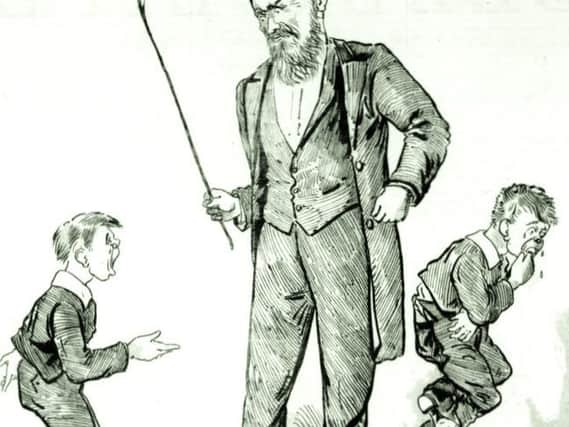Preston teacher acquitted after he thrashed pupil ‘black and blue'


Garrett Cassidy, a trainee schoolmaster, at St. Augustine’s RC Boys’ School appeared before the magistrates at the Preston police court on the last Monday of March 1882 to answer a summons brought against him of severely thrashing a pupil.
The action had been brought by Charles Molloy, the father of Michael Molloy, aged 11, following the incident on the previous Thursday. According to the prosecution, led by Mr. Ambler, the lad Molloy had on the previous Sunday had a quarrel with another lad named Dunn, during which the latter was given a black eye. On the following Thursday the schoolmaster asked Dunn who gave him the black eye and he told him Molloy was responsible.
Advertisement
Hide AdAdvertisement
Hide AdMr. Cassidy had then get hold of his cane and told Molloy to stand out and be caned. This he refused to do and as the master pulled him off his seat to cane him he fell on the floor, and whilst there he was struck several times with the cane. To all intents and purposes receiving a right good thrashing, making the lad’s legs black and blue.
The boy complained to his father that evening and he found marks on his back, arms and legs. The following day Mr. Molloy confronted the teacher who he asked to apologise. When Mr. Cassidy refused to do so, Mr. Molloy told him he would issue a summons.
In his defence the accused was represented by Mr. Edelston who said that Mr. Cassidy had been carrying out his duty as a schoolmaster and intended to give the lad two strokes of the cane. Unfortunately, his refusal to hold out his hand had led to the more severe punishment. It was important that discipline was maintained and Mr. Cassidy was not known for handing out a thrashing. From what he understand the lad was a scholar who was a troublesome character known for fighting and swearing and on occasions and could not be made to do right without being caned.
He suggested that the lad’s parents had done the teacher an injustice and that they should have gone to Canon Taylor at the St. Augustine’s Presbytery with their grievances. In his opinion the prosecutor he had allowed his passion and excitement to get the better of his judgement. The reality being that if the lad had stood up and held out his hand for the justifiable punishment then the matter would have resolved itself.
Advertisement
Hide AdAdvertisement
Hide AdChairman, Edmund Birley, and the other magistrates then retired to consider their verdict. When they returned a few minutes later he announced that the majority of the magistrates were against a conviction and the case was dismissed. Corporal punishment continued in state schools in the UK until being banned in 1986.
Indeed, it was still on the agenda in my schoolboy days at St. Augustine’s in the 1950s, although not as commonplace as in the Victorian era.
Sadly, the old school building in Vauxhall Road was crumbling in the early 1960s and I and my schoolboy pals and teachers had to move to within St. Ignatius school on Meadow Street for our final years.
The church of St. Augustine’s was opened in 1840 and both the boy’s and girl’s schools of Victorian days that followed served the parish well, as does the present day St. Augustine’s Primary School in St. Austin’s Place. Unfortunately, the church building, that was extended in 1890, with the two familiar bell towers added, was closed in 1984 when dry rot was discovered in the roof.
Advertisement
Hide AdAdvertisement
Hide AdChurch services continued in the years ahead in the nearby school buildings and presbytery until 2015 when the local parishes were amalgamated.
Although the main body of the church was demolished in 2004, a purpose built sports and leisure centre was created and the building is nowadays part of the Cardinal Newman college campus.